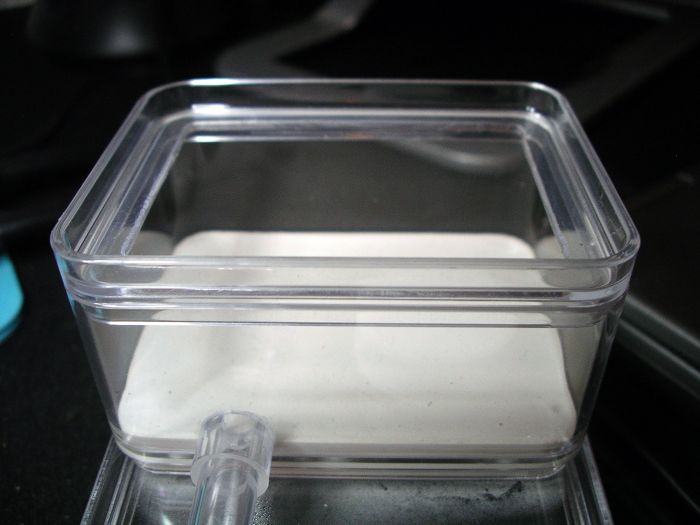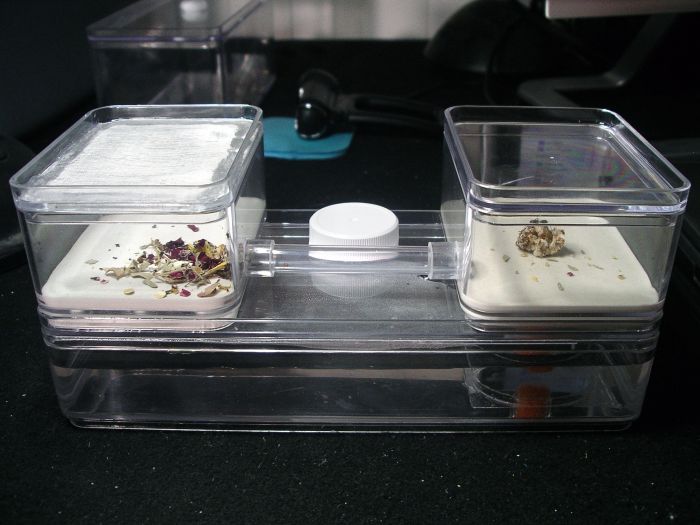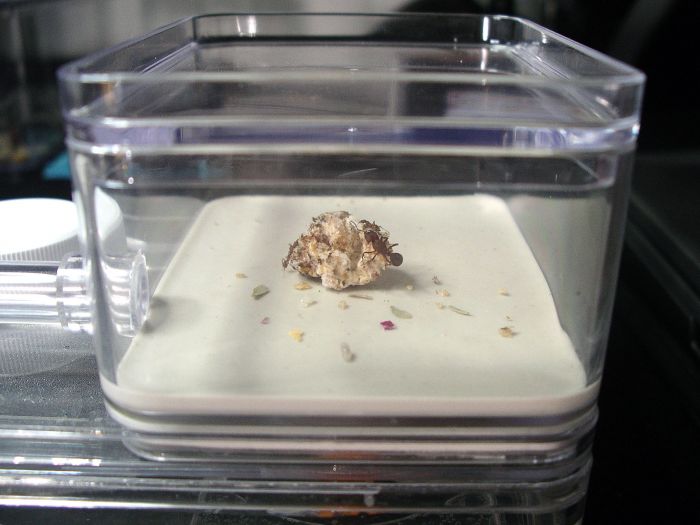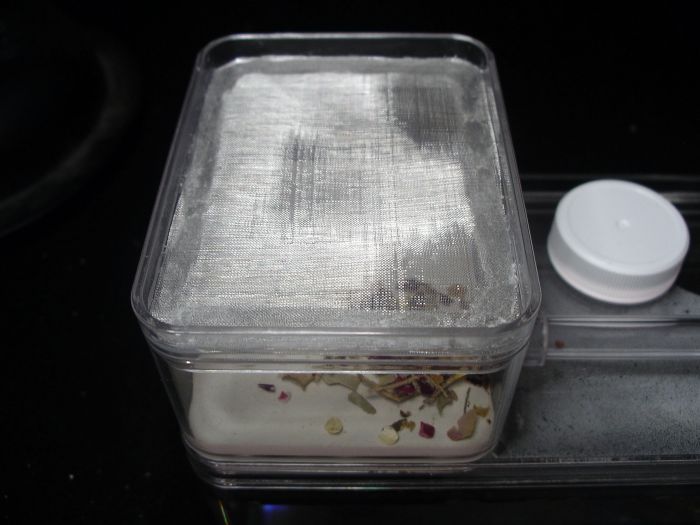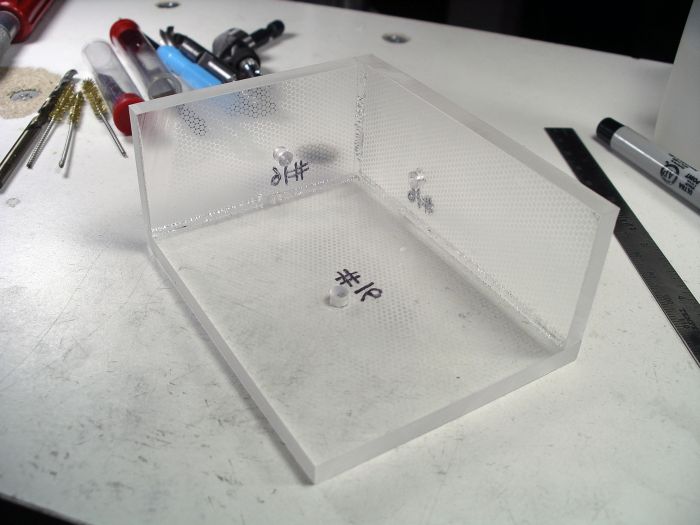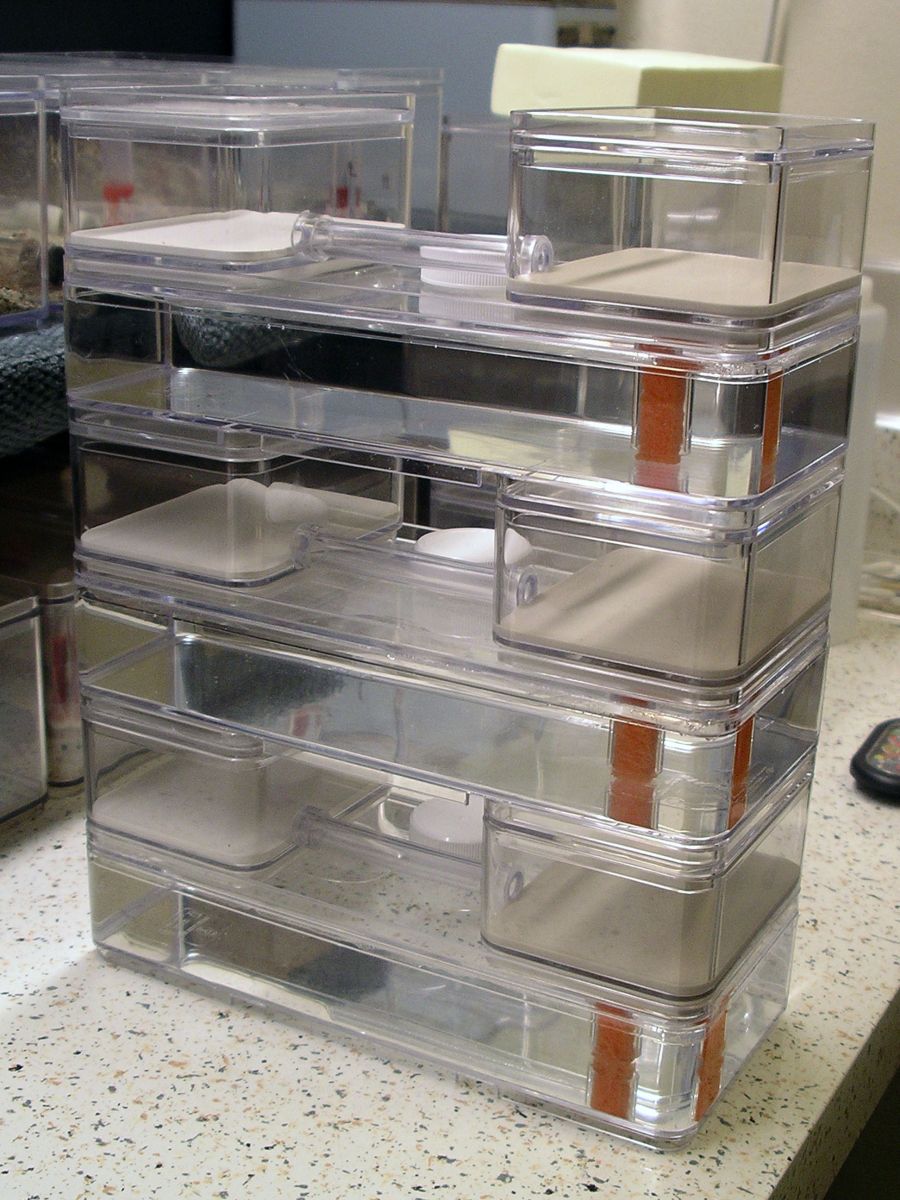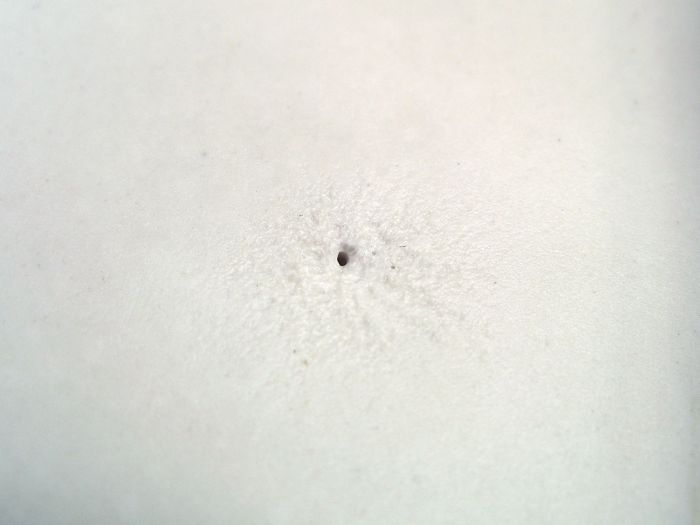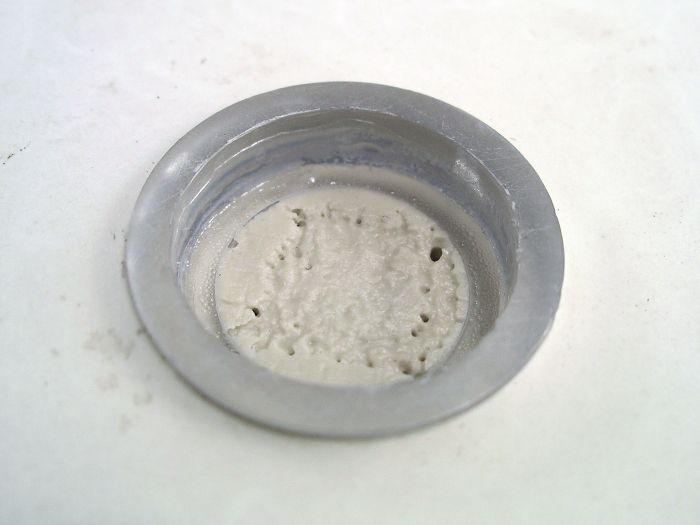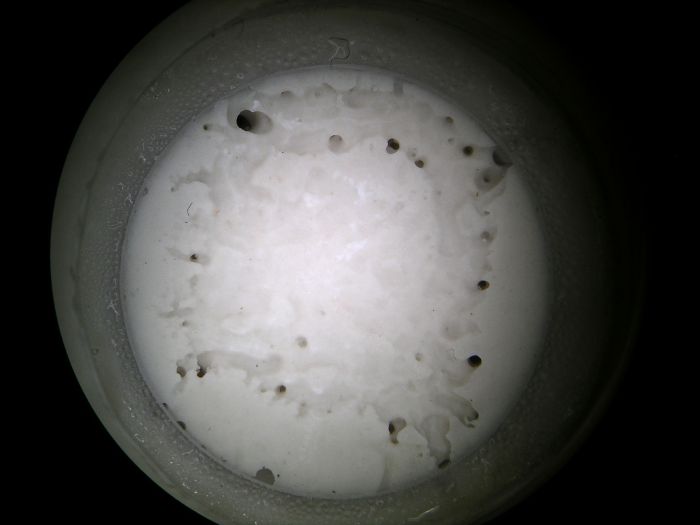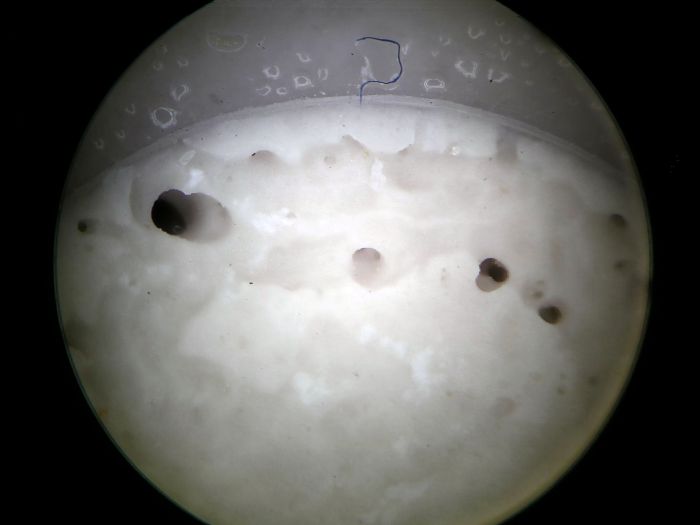Here's the new leaf-cutter formicarium.
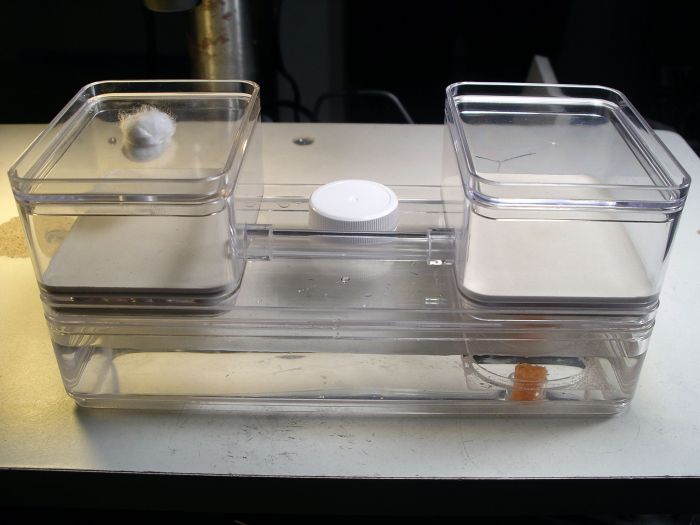
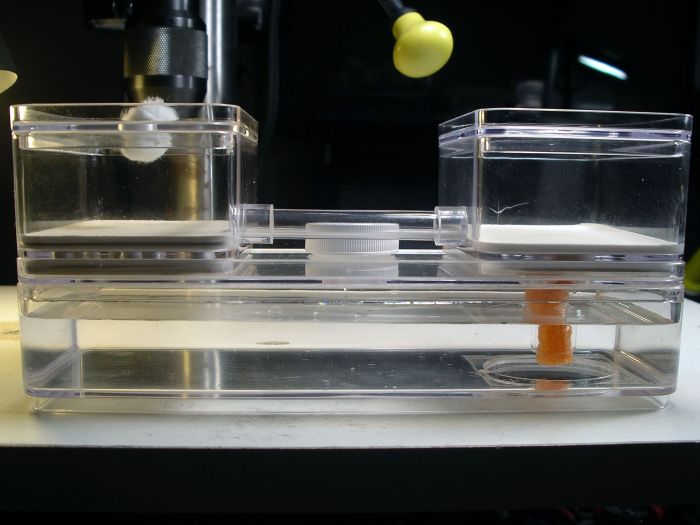
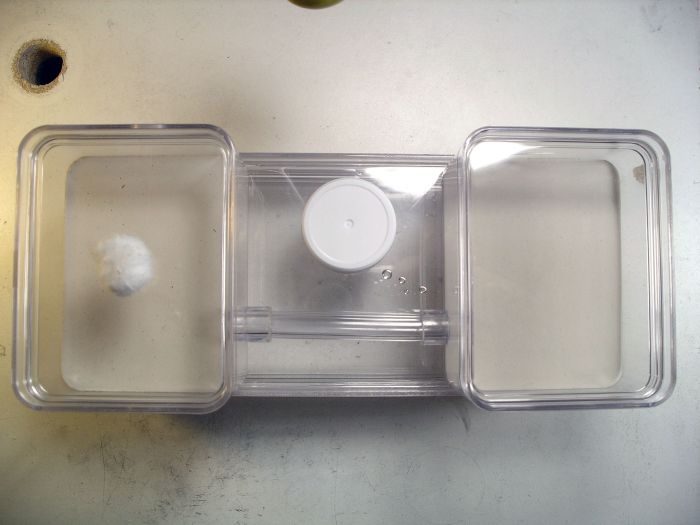
I based these on the same design used by Dr. Rebecca Clark from Texas A&M University. These here are the ones she made.
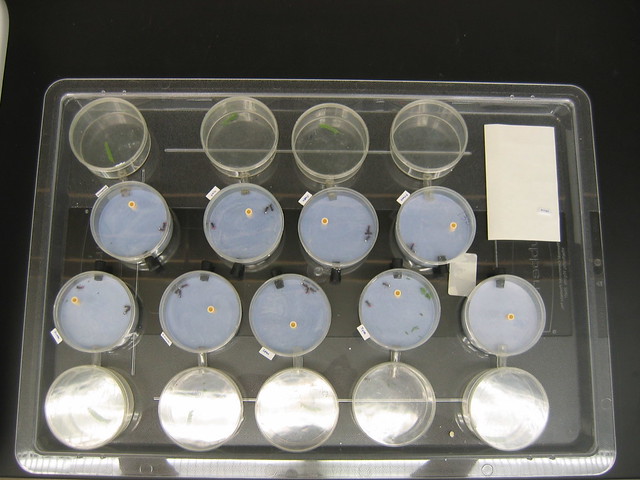
As I always do, I added a hydration system to mine for convenience and consistency. I sealed up one of the shorter medium sized containers to make a water tank. I then created a port where a long narrow sponge sits and acts as a wick for the water. The sponge is small so that it can be easily pushed down by the weight of the container sitting on top of it, ensuring good transferring of the water from it to the Hydrostone in the floor of the chamber container.
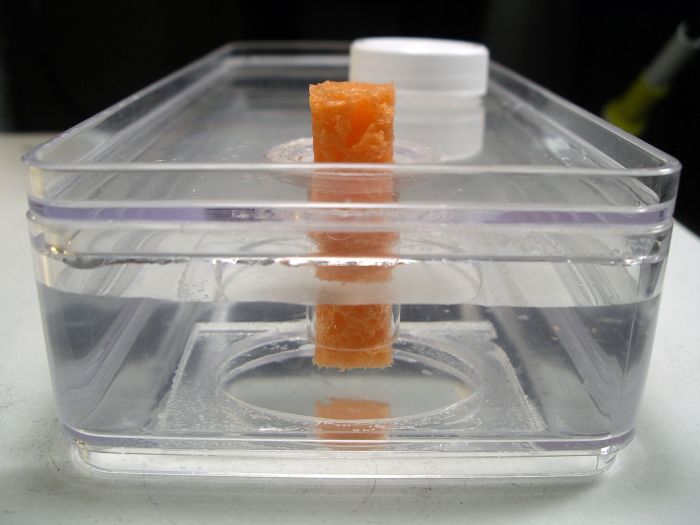
Here's the bottom of the chamber container. You can see the Hydrostone port that comes through the bottom. This is part of the Hydrostone floor of the container, so it becomes damp when the sponge touches it. The Hydrostone around it, separated by the plastic ring, is there just for weight, and purposely segregated from the port.
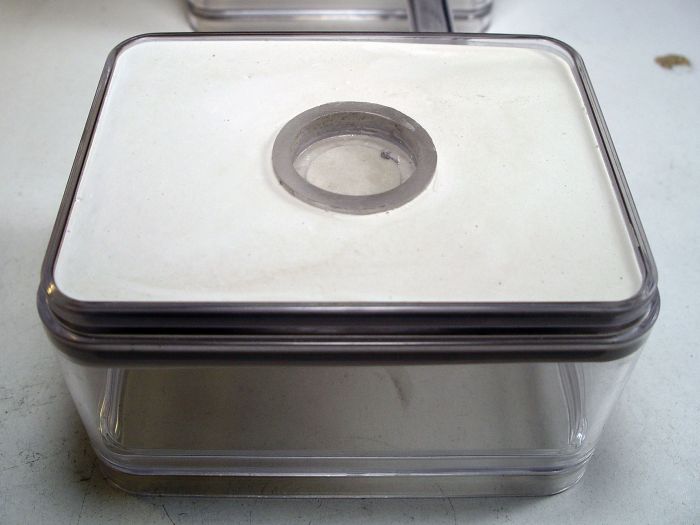
Here are both the chamber container and the foraging container. I added Hydrostone to the bottom of the foraging container for added weight as well.
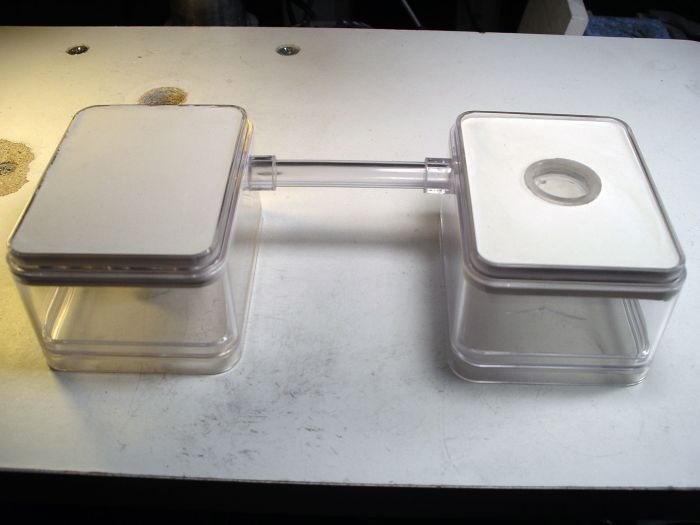
I should be testing this out over the next few days, so as always, I'll report back here with the results.





